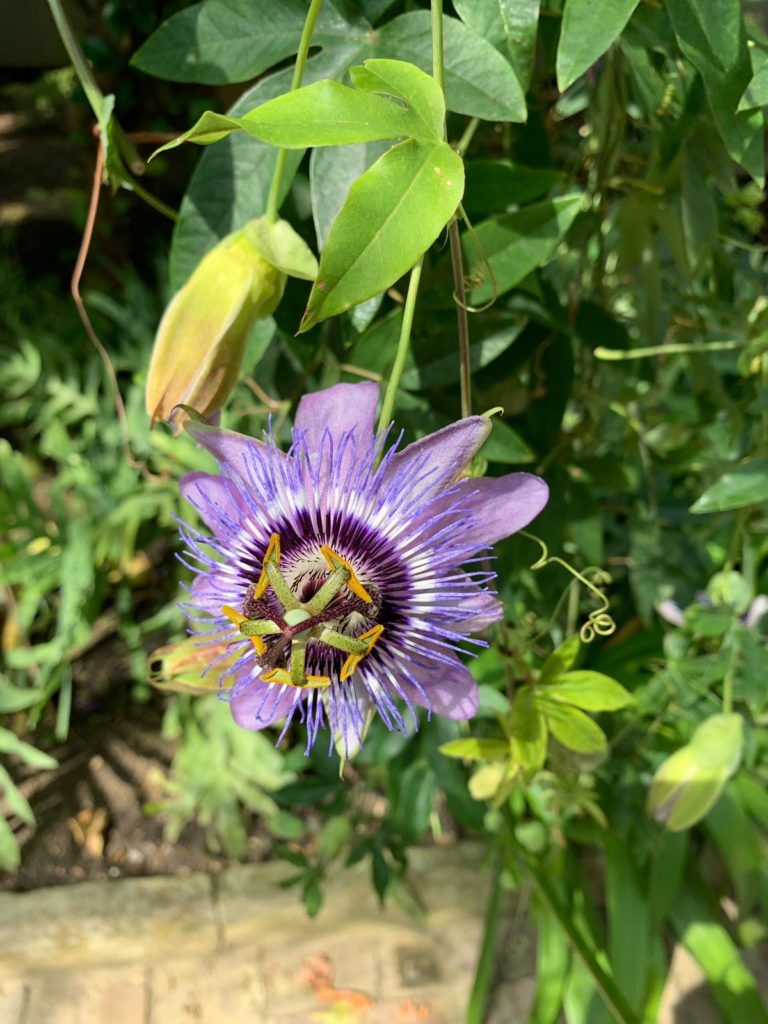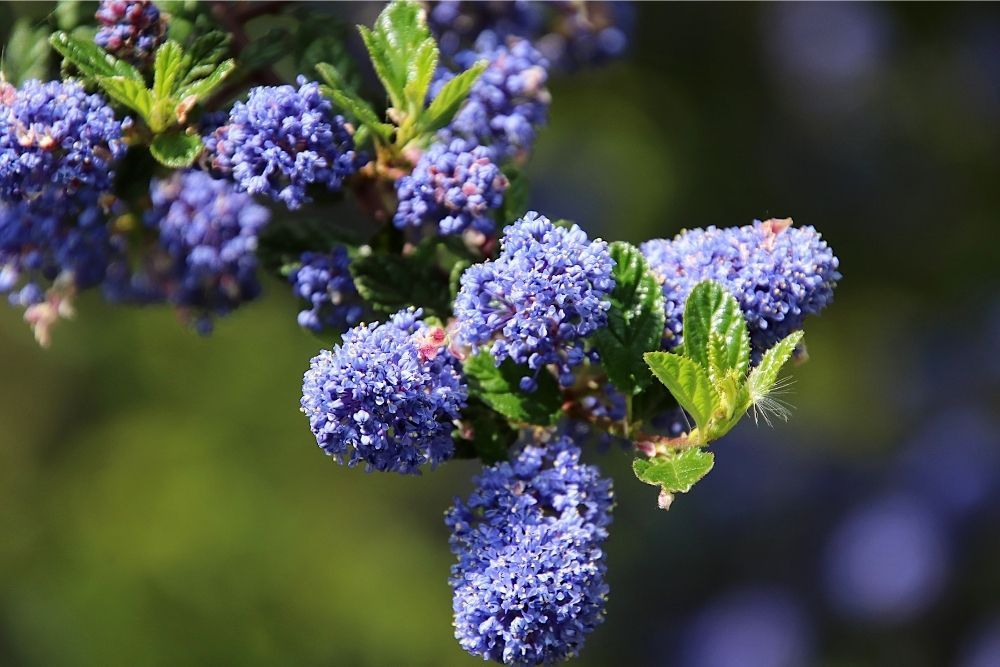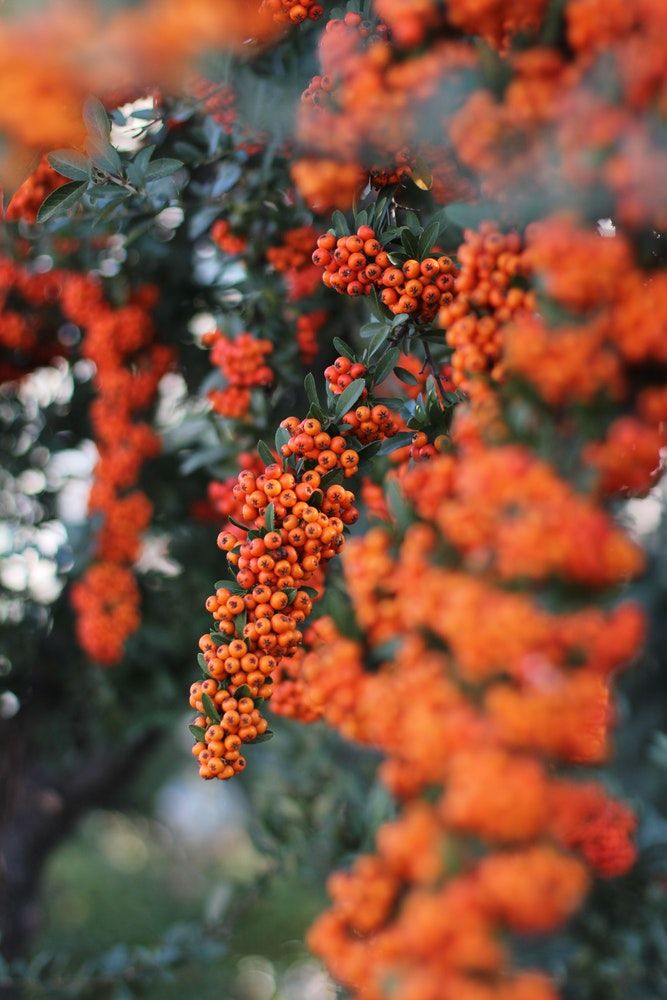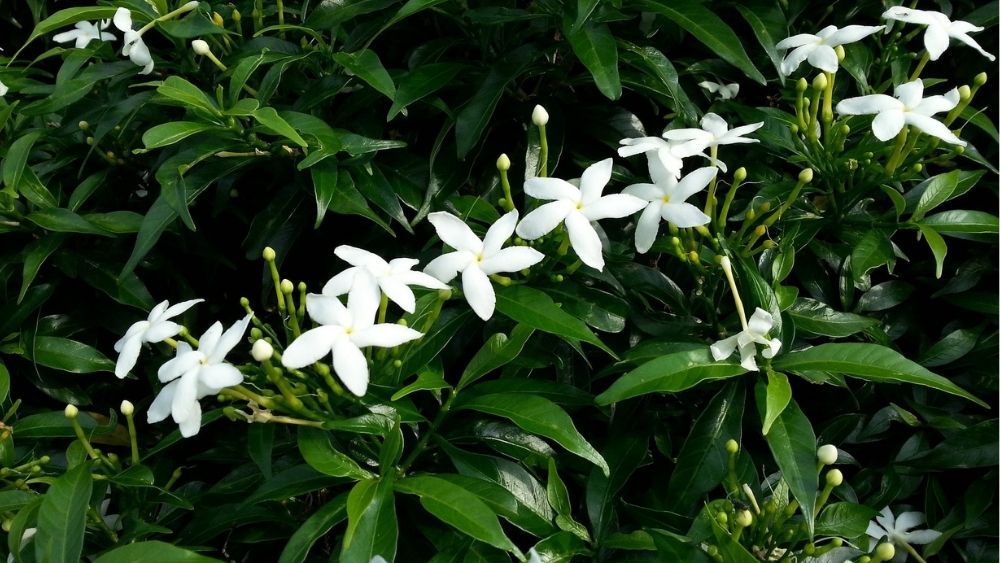
What are the Best Evergreen Climbing Plants?
Looking to cover a monstrous wall or hideous fence? Perhaps you’ve got a bare pergola or trellis that needs livening up a little. Evergreen climbers are versatile plants that provide a year-long display.
1. English Ivy
Scientific name: Hedera helix
English Ivy is often unappreciated and misunderstood. This plant is a favourite among local wildlife, providing nesting sites and food for birds and a home for insects. Place English Ivy against an east or north-facing wall, and it’ll even offer partial insulation!
2. Passion Flower
Scientific name: Passiflora caerulea
Passion Flower is the climber of choice if you’re looking to bring an exotic feel to your garden. This plant produces complex blooms in summer that attract wildlife species en masse, including hummingbirds, bumblebees, carpenter bees, wasps, bats, and butterflies.
3. Bluebell Creeper
Scientific name: Sollya heterophylla
For a more subtle display, try Bluebell Creeper. Your garden will benefit from this plant’s miniature blue blooms that hang like bells from thin stems. Bluebell Creeper loves a sunny but sheltered location.
4. Broad-Leaved Sausage Vine
Scientific name: Holboellia latifolia
So, this plant’s name doesn’t sound particularly appealing. But the Broad-Leaved Sausage Vine shouldn’t be cast aside. The blooms are purple where they touch the stem, then progress to a delicate cream colour.
However, it’s the plant’s scent that really draws people in – a combination of fresh melon and heady jasmine.
5. Persian Ivy
Scientific name: Hedera colchica
This Ivy variety is a clinger, so it’s the prime choice if you’re looking for evergreen climbing plants for fences. Persian Ivy isn’t a fussy plant and will grow well in a wide variety of conditions. You can trim this plant back at any time of year to stop it from taking over your garden.
Persian Ivy contains toxic sap, so wear gloves when handling it to avoid skin irritation.
6. Silk Tassel Bush
Scientific name: Garrya elliptica
The silver catkins of Silk Tassel Bush are its most prominent feature. You can enjoy these from late winter through to early spring. This plant rapidly spreads up a shaded wall, reaching a maximum height of 10ft. Ensure you train this plant to get the most out of it.
7. Chocolate Vine
Scientific name: Akebia quinata
This plant is best known for its rich chocolatey scent emitted from its deep, dark purple blooms. But its attractive qualities don’t end there. The pulp from the fruit serves as a delicacy in Japan, and you can weave the vines into baskets.
Give this plant full sun or partial shade and a sheltered spot in colder climates.
8. Armand Clematis
Scientific name: Clematis armandii
Armand Clematis boasts big creamy-white flowers in spring, sometimes bearing a slight pink hue. These provide a stark contrast to the plant’s verdant green leaves.
You’ll want to keep a sheltered spot spare for Armand Clematis, but situate it in full sun.
9. Wintercreeper
Scientific name: Euonymus fortunei ‘Silver Queen’
Wintercreeper’s variegated leaves are its most loved quality. They boast a shiny green colour in their centre, surrounded by creamy-white margins. This plant doesn’t suffer when exposed to cold weather; instead, it adds another hue to its leaves, a light purple/pink.
Place in full sun or shade, in a border or for hedging.
10. Japanese Honeysuckle
Scientific name: Lonicera japonica
Japanese Honeysuckle is a vigorous climbing vine that produces an abundance of vanilla-scented blooms. These are white when they first open but fade to a pale yellow shade as they mature. These flowers provide a vital food source for hummingbirds, deer, and rabbits.
11. Henry’s Honeysuckle
Scientific name: Lonicera henryi
Unlike Japanese Honeysuckle, Henry’s Honeysuckle has unscented blooms. The leaves change colour with age, from a coppery colour when young to a glossy dark green when mature.
Bear in mind if Henry’s Honeysuckle is exposed to a particularly harsh winter, it may lose some of its leaves.
12. California Lilac
Scientific name: Ceanothus
California Lilac sports vibrant clusters of fragrant blue flowers. Add this plant to your garden and watch the bees gather, feeding on the sweet nectar the blooms provide. With California Lilac, a little bit of shelter goes a long way.
13. Maidenhair Vine
Scientific name: Muehlenbeckia complexa
Maidenhair Vine is one of the most unique evergreen climbing plants available. It has skinny stems with a distinctive wiry appearance. These often interlace, providing dense coverage. Maidenhair Vine is an excellent climber for walls, fences, and ugly outbuildings.
14. Climbing Hydrangea
Scientific name: Pileostegia viburnoides
The verdant green background of Climbing Hydrangea’s leaves serves only to enhance its bold white blooms even more. These reveal themselves in late summer and die back after autumn.
Choose a north- or east-facing wall and grow Climbing Hydrangea in the sun or shade.
15. Firethorn
Scientific name: Pyracantha
Firethorn was given its name for the profusion of vibrant berry clusters it displays. These are a hit with the local wildlife, attracting many bird and bee species. Firethorn provides the perfect natural screen and adds to your home security, as its thorny stems are sure to puncture the skin of any unwanted intruder.
16. Potato Vine
Scientific name: Solanum laxum ‘Album’
Potato Vine is a semi-evergreen plant that often loses leaves in particularly chilly winters. It boasts big bunches of delicate white flowers adorned with yellow centres. Place in a sheltered spot and watch your Potato Vine grow to 20ft tall!
17. Star Jasmine
Scientific name: Trachelospermum jasminoides
Star Jasmine is a versatile climber that puts on a year-long show. Most of the year, its leaves are glossy green but transform into a bronze-red shade during winter. Its delicate star-shaped flowers blossom in summer and autumn and release a pleasing aroma.
18. Stauntonia Vine
Scientific name: Stauntonia hexaphylla
Stauntonia Vine isn’t a popular choice in UK gardens, but it’s unclear why! The plant speedily ascends any vertical surface and presents bell-shaped blooms, white on the outside and pale pink on the inside. It’s a self-clinging plant, but it may need some support from a wire or trellis.
This plant often exceeds 33ft tall.
19. Winter-Flowering Clematis
Scientific name: Clematis cirrhosa
This winter flowerer will bring some joy to your garden in the colder months. There are several Winter-Flowering Clematis species, but one of particular note is Clematis ‘Freckles’. This unique variety bears creamy-yellow blooms heavily embellished with maroon freckles.
20. Wall Germander
Scientific name: Teucrium fruticans
This creeping climber has scented silver-green foliage that beautifully complements its summer-flowering blue blooms. Wall Germander is a favourite among craftspeople; they use the stems for potpourri and wreaths.
Wall Germander prefers a sheltered, sunny spot and doesn’t exceed 12ft tall.
21. Chilean Bellflower
Scientific name: Lapageria rosea
For a bright pop of colour, you can’t go wrong with the Chilean Bellflower. Without a doubt, this plant gains adoration for its vibrant, downward-facing bell-shaped flowers. These appear in late summer and stick around until autumn.
Place in shade or partial shade, and it’ll grow up to 13ft tall.
22. Clematis ‘Early Sensation’
Scientific name: Clematis ‘Early Sensation’
Clematis ‘Early Sensation’ was given this name due to its flowering period, earlier than other Clematis species. This plant’s soft, velvety white flowers are adorned with yellowy-green stamens and have a sweet scent.
The leaves progress from bronze to green as the plant matures.
23. Chilean Potato Vine
Scientific name: Solanum crispum ‘Glasnevin’
Chilean Potato Vine boasts purple blooms with a vibrant yellow centre in summer and autumn. The sheer volume of these tiny flowers is enough to draw anyone’s attention.
If ingested, this poisonous plant will cause severe damage, so watch out for your children and furry friends!
24. Ivy ‘Buttercup’
Scientific name: Hedera helix ‘Buttercup’
Ivy ‘Buttercup’ is ideally situated against a wall due to its self-clinging growth habit. It’ll also provide a decorative display to the base of a tree. This Ivy variety is most loved for its buttery-coloured foliage, which keeps its colour even during the cold wintry days.
25. Seemann’s Hydrangea
Scientific name: Hydrangea seemannii
Although not the most common Hydrangea species, Seemann’s Hydrangea puts on a year-long display of inky green leaves and summer-flowering white blooms. You’ll find this plant takes a little while to get settled, but once it’s climatised, it can grow over 30ft tall.
26. Ivy ‘Glacier’
Scientific name: Hedera helix ‘Glacier’
Ivy ‘Glacier’ is a versatile climber that you can place on shaded walls, up a pergola, or along a low wall. Its leaves are the plant’s real showstopping quality, boasting cream and silvery markings.
Wildlife will go crazy for this plant, as it provides nectar, pollen and berries later in the year than many other plant species.
27. Clematis ‘Winter Beauty’
Scientific name: Clematis urophylla ‘Winter Beauty’
Clematis ‘Winter Beauty’ really does bring something unique to a cold winter garden. Its luscious green leaves provide a backdrop to the plant’s glorious white, bell-shaped flowers.
When it comes to low maintenance evergreen climbing plants, Clematis ‘Winter Beauty’ is the prime choice.
Conclusion
Evergreen climbers aren’t just for covering up an unattractive wall. They can grow up outbuildings, ascend a fence, or scale a trellis or pergola. You can use them for added privacy in an overlooked garden or for a pop of colour in an otherwise unexciting border. The possibilities are endless!







